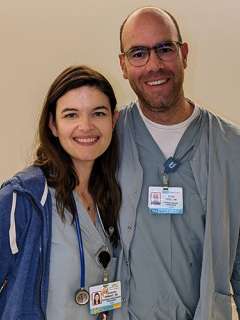Informatics Update
September 14, 2023
Dear DAPM,

The Informatics Division is starting a regular news update to share some relevant updates and highlight some of the tools and services that we already have in place. We understand that many of the projects we work on and systems we support can be a bit of a black box, so we are taking steps to open doors and support paths for interested department members to get more involved.
In this first letter, we are highlighting the Discovery Data Repository (DDR). The DDR is a system that has been available for almost three years and has provided the data for many publications and grant proposals, with minimal to no involvement from the informatics faculty. This is a success story for the engaged faculty who have become autonomous with data collection and analytics.
To dive into more detail, the DDR is a UCLA system-wide tool that is a copy of the UCLA clinical data warehouse, except with de-identified data. This tool was created by the David Geffen School of Medicine (DGSOM) and includes many, many users outside of our department. When we first gained access, we found that the DDR in its original form was not very intuitive or ideally suited for perioperative needs. Hence, we worked with the UCLA technical teams to create a near-complete duplicate of our internal DAPM Perioperative Data Warehouse (PDW) and had it embedded within the DDR. This means that researchers are now able to log into the DDR environment and “play” with real data—without the actual patient identifiers and with a slight time/date shift.
What does this mean for you?
If you are interested in programming or getting to see how a large-scale database works, we can very easily get you access to the DDR. Given that the data is de-identified, the hurdle to get through compliance and all the other regulatory bodies is minimal… almost non-existent. You can learn how to program in SQL, and any results that you get are real!
Moreover, since we are so dedicated to the belief in self-service analytics, we have created presentations, videos, and other resources that are centrally located in a DDR User Hub in Microsoft Teams to guide users through the process of logging onto the system and querying tables. There are PDF manuals of what our data structure looks like, and we even have open office hours. Dr. Drew Cheng has dedicated time weekly to meet with users and write code together via Zoom. Then, he can send over the mutually created scripts over email. If that does not work, you can browse scripts created in prior sessions that are open to sharing.
Our intention is to create a supportive community for anyone interested in mining data on their own. It does take time and dedication to learn a new skill, but we are excited to help cultivate growth and discovery, and to support future data scientists and researchers.
When asked about his experience with DDR, Brent Ershoff, MD, MS, said, "As an anesthesiologist with no prior programming background, I've enjoyed diving into the DDR, teaching myself SQL to explore its vast deidentified health data. The insights from the DDR even inspired me to conduct a study using the PDW, its identified counterpart. And to think, this was all before ChatGPT could whip up SQL code for me!"
Thank you for your time, and please let us know if you have any questions.
Sincerely,
Eilon Gabel, MD, and Theodora Wingert, MD